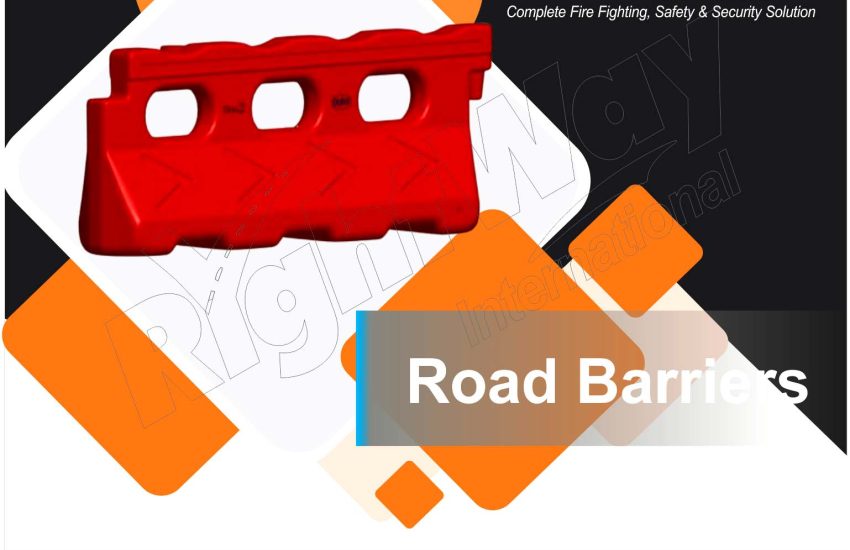Road barriers are critical tools in traffic management and roadway safety. They help protect drivers, pedestrians, and infrastructure by reducing collision impact and guiding vehicle flow. Designed in different forms and materials, road barriers serve distinct purposes across various traffic environments.
What Are Road Barriers?
Road barriers are physical structures placed along roadways to manage traffic and improve safety. They prevent vehicles from entering restricted zones, protect pedestrians, and reduce damage during crashes. Common materials include concrete, steel, plastic, and wire, each selected based on the specific application and expected level of impact.
Key Functions of Road Barriers
1. Crash Protection
Barriers absorb and deflect the energy from vehicle impacts. This reduces crash severity and prevents vehicles from crossing into opposing traffic or off-road areas.
2. Traffic Control
They guide vehicles along safe paths, especially in complex or high-traffic areas. Barriers help prevent lane drifting and unauthorized access.
3. Pedestrian Safety
In urban zones and near crosswalks, barriers create a protective buffer between pedestrians and traffic.
4. Infrastructure Protection
Barriers shield vital infrastructure—such as bridges, tunnels, and traffic signs—from vehicle collisions.
5. Lane Guidance
They help define road boundaries and direct traffic through detours or construction zones, improving flow and safety.
Types of Road Barriers
Concrete Barriers (Jersey Barriers)
Heavy and durable, these barriers are ideal for highways and construction zones. They absorb high impact and prevent vehicle crossovers.
Steel Barriers
Made of flexible metal, steel barriers bend slightly on impact to reduce injury. They’re often used on high-speed roads.
Plastic Barriers
Lightweight and portable, these barriers work well for temporary needs, such as construction sites or public events. Many are water-filled for added stability.
Wire Rope Barriers
These use steel cables stretched between posts. They flex on impact, absorbing energy and reducing crash severity.
Guardrails
Common along highways and steep edges, guardrails prevent vehicles from veering off the road or hitting fixed objects.
Crash Cushions
Also called impact attenuators, these are placed at high-risk points like median ends. They absorb energy during a crash and minimize injury.
Benefits of Road Barriers
- Increased Safety: Barriers reduce the chance and severity of crashes, protecting both people and vehicles.
- Accident Mitigation: They help prevent vehicles from entering dangerous zones or colliding with roadside structures.
- Traffic Flow Management: Barriers guide traffic through complex routes, improving efficiency and reducing congestion.
- Infrastructure Preservation: By deflecting vehicle impacts, barriers lower the need for costly repairs.
- Cost-Effective Safety: Once installed, barriers offer long-term protection with relatively low maintenance costs.
Best Practices for Road Barrier Usage
1. Strategic Placement
Install barriers where risks are highest—such as sharp curves, intersections, and work zones. Well-placed barriers offer maximum protection.
2. Routine Maintenance
Inspect barriers regularly. Replace damaged or weakened sections immediately to maintain effectiveness.
3. High Visibility
Use bright colors, reflectors, or LED lights to ensure that barriers are visible in all weather and lighting conditions.
4. Follow Safety Standards
Always comply with local and national regulations. This ensures the barriers meet structural and safety performance requirements.
5. Public Awareness
Educate drivers and pedestrians about the role of road barriers. When people understand their purpose, they’re more likely to respect and follow barrier guidance.
Conclusion
Road barriers play a vital role in protecting lives and maintaining safe roadways. By guiding traffic, absorbing impacts, and shielding infrastructure, they create safer environments for everyone. Choosing the right type of barrier, placing it strategically, and keeping it well-maintained can make a major difference in accident prevention and traffic control. As cities and traffic systems grow more complex, road barriers remain a fundamental part of modern transportation safety.


